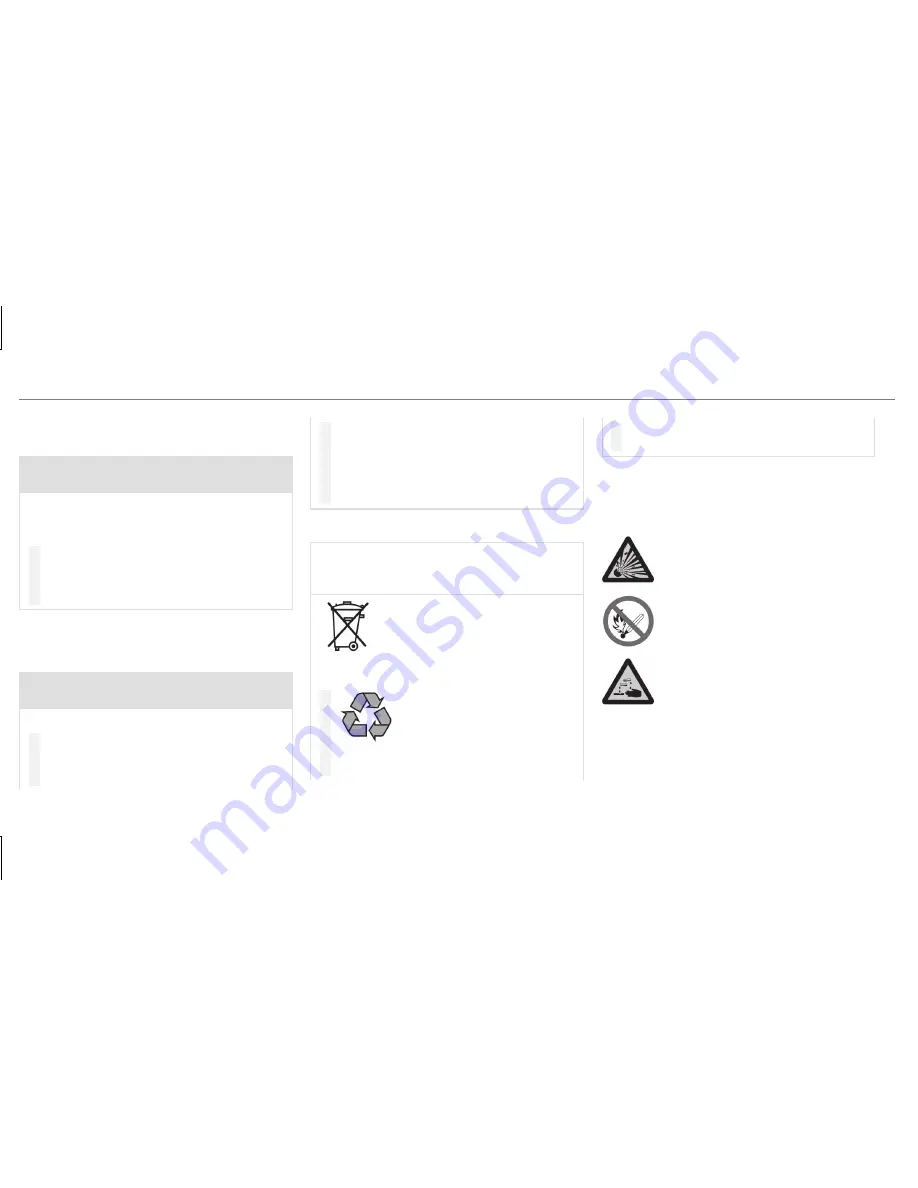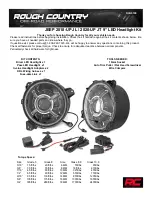
All vehicles except vehicles with a lithium-
ion battery
&
WARNING Risk of explosion due to elec‐
trostatic charge
Electrostatic charge can cause sparks which
may ignite the highly flammable gas mixture
in the battery.
#
To discharge any electrostatic charge
that may have built up, touch the metal
vehicle body before handling the bat‐
tery.
The highly flammable gas mixture is created
while the battery is charging and during starting
assistance.
&
WARNING Danger of chemical burns
from the battery acid
Battery acid is caustic.
#
Avoid contact with the skin, eyes or
clothing.
#
Do not lean over the battery.
#
Do not inhale battery gases.
#
Keep children away from the battery.
#
Immediately rinse battery acid off thor‐
oughly with plenty of clean water and
seek medical attention immediately.
All vehicles
+
ENVIRONMENTAL NOTE Environmental
damage caused by improper disposal of
batteries
Batteries contain pollutants. It is
illegal to dispose of them with the household
rubbish.
#
Dispose of batteries in an
environmentally responsible manner.
Take discharged batteries to a qualified
specialist workshop or to a collection
point for used batteries.
If you have to disconnect the 12 V battery, con‐
tact a qualified specialist workshop.
Comply with safety notes and take protective
measures when handling batteries.
Risk of explosion.
Fire, open flames and smoking are
prohibited when handling the battery.
Avoid creating sparks.
Electrolyte or battery acid is corro‐
sive. Avoid contact with the skin, eyes
or clothing. Wear suitable protective
clothing, in particular gloves, an
apron and a face mask. Immediately
rinse electrolyte or acid splashes off
with clean water. Consult a doctor if
necessary.
420 Breakdown assistance
















































